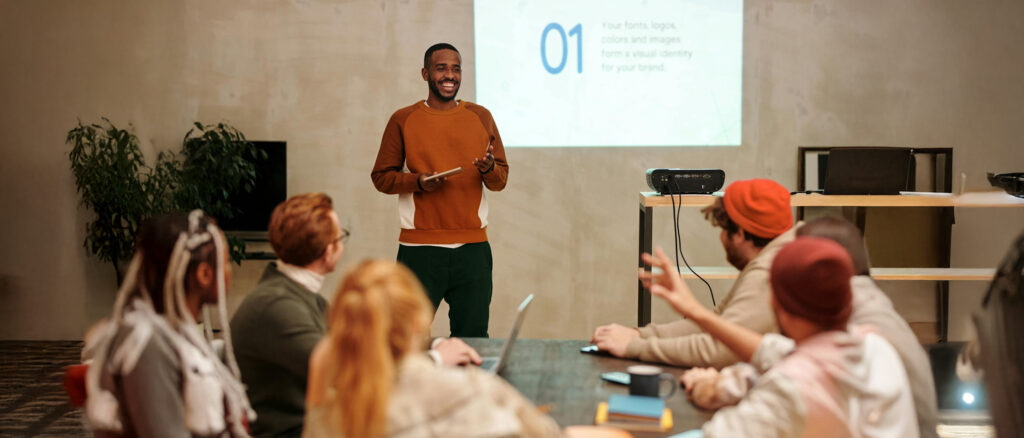Lunch is about you: How the food and drink industry is embracing hyper-personalisation
Food and drink are among life’s most necessary and also potentially most pleasurable experiences. The choices of what to buy, cook, or eat can be collective or individual, and the variety of foods available in supermarkets and restaurants is greater than ever. Enter the world of hyper-personalised food and drink.
We can see two strands of personalisation in the food and drink market: products designed for fun and social enjoyment, and nutrition-based products aimed at supporting healthier lifestyles.
Many people, particularly younger generations, are looking at an even more revolutionary way to interact with their food and drink. Using technology, it’s now possible to tailor their choices specifically to them, taking into account everything from preferences and desirable health outcomes, to political, social, and cultural beliefs, and even mood changes.
So, what does the future of lunch really look like?
The rise of exclusion eating
The UK is currently home to more vegans than anyone else in the world, with 63.5% buying vegan food items in 2021. An Ipsos poll in early 2022 found that almost half of British adults use plant milks of some kind. And some 20% of the UK population don’t drink alcohol at all.
According to research by Spoon Guru, 64% of the world’s population now follow some sort of exclusion diet; on average, shoppers have 3.3 dietary preferences.
Where tech comes to the table
The term ‘nutrigenomics’ was first coined by Peregrin in 2001, and has since been developed into research and product development which supports personalised diets designed and adapted to individuals, based on their genome and genetic variations, and individual products, smart home solutions, wearable technology which makes nutritional recommendations, and even DNA-based diets, are set to be significant food and drink trends in the future.
Already people are using technology to manage health conditions, such as Abbott Healthcare’s Freestyle Libre wearable glucose monitoring systems for people living with diabetes, or accessories which monitor blood pressure or heart rate.
Fundamental – or just fun?
We can see two strands of personalisation in the food and drink market: products which add to the fun and social enjoyment of food and drink, and nutrition-based products aimed at supporting healthier lifestyles.
We take a look at some of the weird and wonderful ways brands are already tapping into this growing desire for food with a personal twist and what personalised food and drink products may be hitting our trollies in the years to come…
Drinks defined by you
If you have particular tastes when it comes to your tipple, the good news is that the drinks industry is making strides in terms of personalisation. D.N.ALE, by Meantime Brewery and genetic testing company 23andMe, is a highly personalised service which involves analysing customers’ DNA and producing customised beers to match their flavour profile. It costs around 30,000 euros for 1200 litres of your unique brew – and you can even get a glass customised to fit your hand.
For wine lovers, California-based start-up Vinome offers a wine subscription service which analyzes your DNA and taste preferences to match you with wines selected uniquely for you.
Personalise your pint
We don’t just want our food to taste personal, we want it to look unique too. Ripple Maker beverage topper devices enable coffee shops and bars to top frothy drinks with customised designs or even trending images from dynamic content feeds. Early adopters of the tech include Guinness, which saw a 20% increase in people trying the stout for the first time when they started using the tech. During trials, some venues saw sales boosted by as much as 52%.
Nutrition-tracking wearables
Drinks brand Gatorade has come up with a unique way to help sportspeople get the exact nutrients they need after a training session – wearable sweat patches that track what they’re running low on. The info from the patches is transmitted to an app which then recommends which of Gatorade’s sports drinks the wearer should opt for to help them refuel.
HEALBE’s GoBe 2, is a complete smart-life band, worn on the wrist, which uses unique technology to track your calorie intake, body hydration, sleep and stress level as well as heart rate, steps, and distance. It runs an advanced algorithm that calculates your calorie intake and gives an overview how you’re doing with your nutrition plans.
Specific snacking – in 3D
When it comes to snacking, many of us do it without thinking, adding unnecessary calories or unhealthy processed ingredients into our diet. Food start-up Nourished is making use of 3D printing technology to produce personalised nutritional chewable ‘snack stacks’ in a matter of minutes. Customers are asked to fill in an online questionnaire about their likes and dislikes, lifestyle and health, and an algorithm uses the information to recommend a combination of nutrients to go into the finished product, which is then printed and delivered. Simple.
Personalised dining
Eating out can be a bit of a minefield if you want to watch the ingredients or the portion sizes you need. London’s Vita Mojo restaurant uses innovative technology to allow diners to tailor their individual meal right down to the exact quantities of each ingredient. The eatery has also partnered with DNAFit so people can take their genetic make-up into consideration when making their menu choice.
DNA in the aisles
In 2019, Waitrose trialled in-store DNA tests to help people make healthier food and drink choices based on their individual needs. Once they’d been tested, shoppers in the trial used a wearable DNABand to scan items as they shopped, to see if they were a match for their genetic profile. The band would even make alternative suggestions of items that might be healthier, based on the shopper’s DNA. In 2023, high street health food chain Holland and Barrett announced that they would be partnering with tech company DNA Nudge to run a similar trial.
The future of hyper-personalisation of our food and drink
It’s clear that there’s a customer desire for personalised food and drink, and brands are stepping up to respond. Full-on personalisation is always going to come at a cost (3,000-euro beer, anyone?) but we’d expect that in the coming years, manufacturers will find a middle-ground of products that are targeted at clearly defined groups of people, rather than being developed with mass-market appeal in mind, or where certain elements of products can be tailored in the final stages of production to help keep costs manageable.
While both strands of hyper-personalised food and drink – the fun ideas and the nutrition-driven technology – are currently gaining momentum, we think it’s the latter which has real potential to change people’s lives for the better and is more likely to transcend faddishness and stay with us for the long haul.
Connect with your future audience
Here at Sticky, we use our data and research resources and a wealth of experience to stay at the forefront of new developments in your market. We can help you identify and appeal to new audiences, find new and exciting ways to embrace trends and build brand strategy which is ahead of the game. If you’d like to talk to us about how we can do that, get in touch.

Sticky



